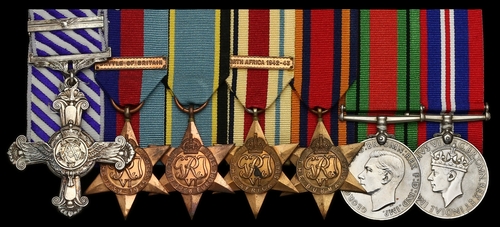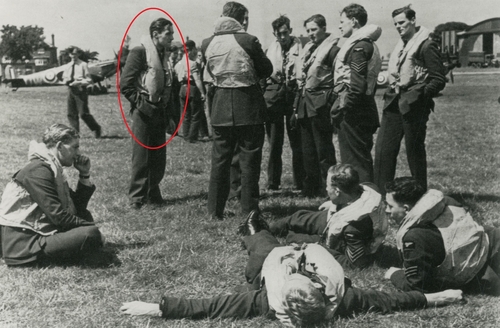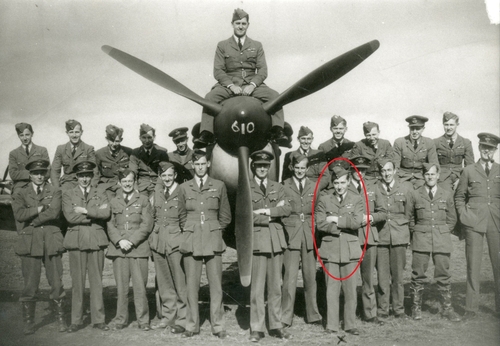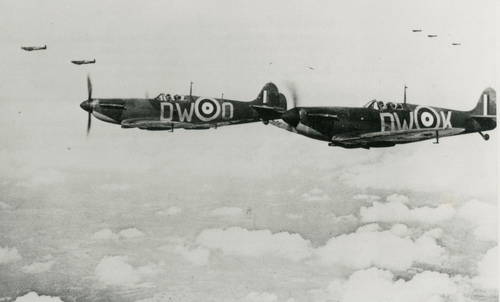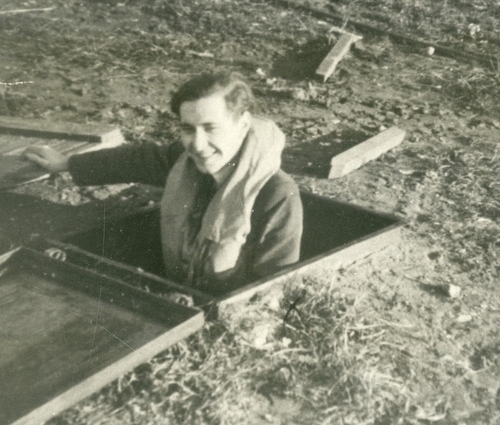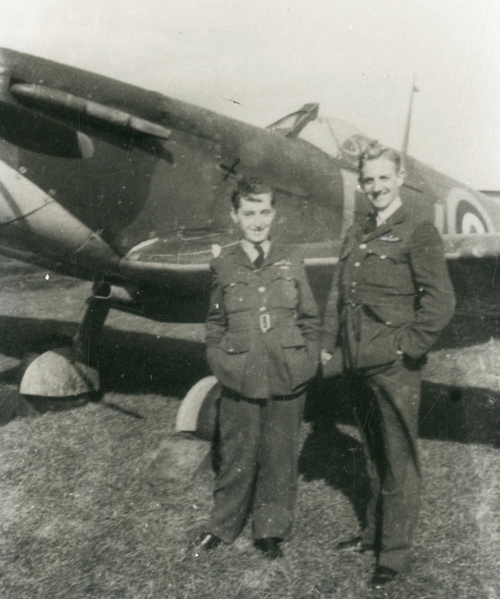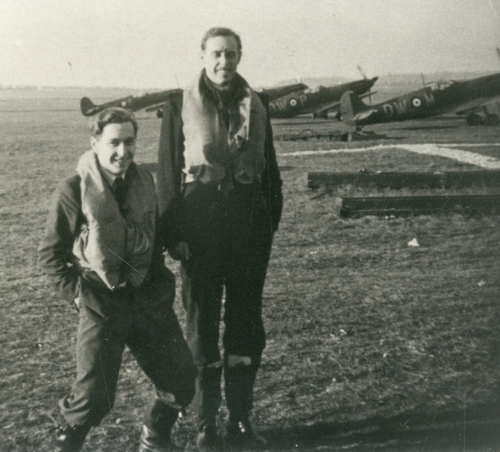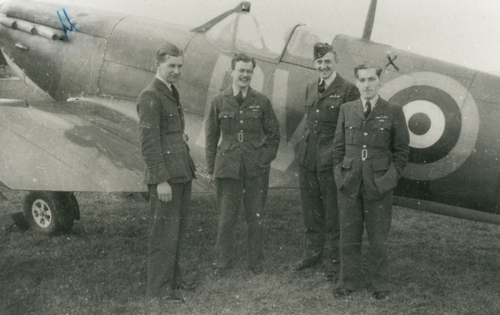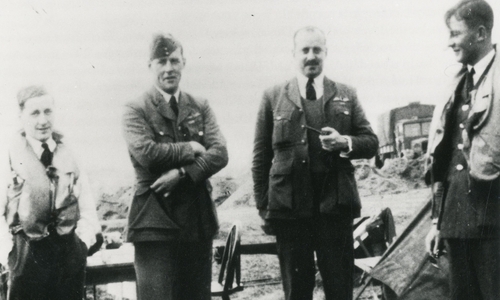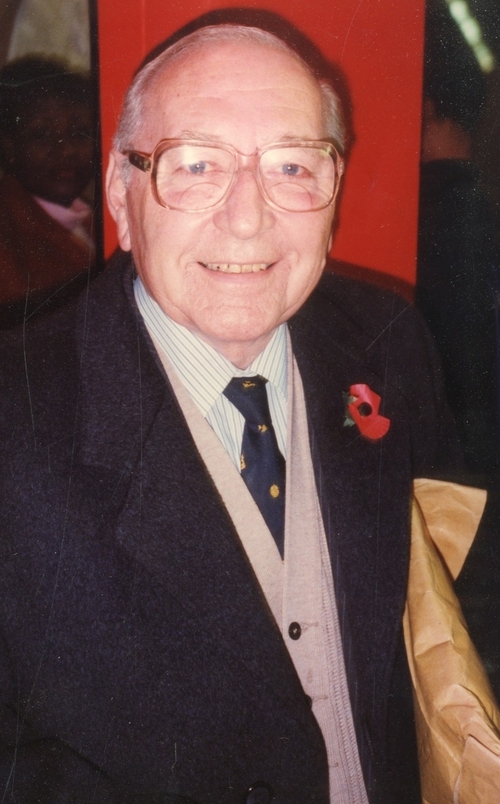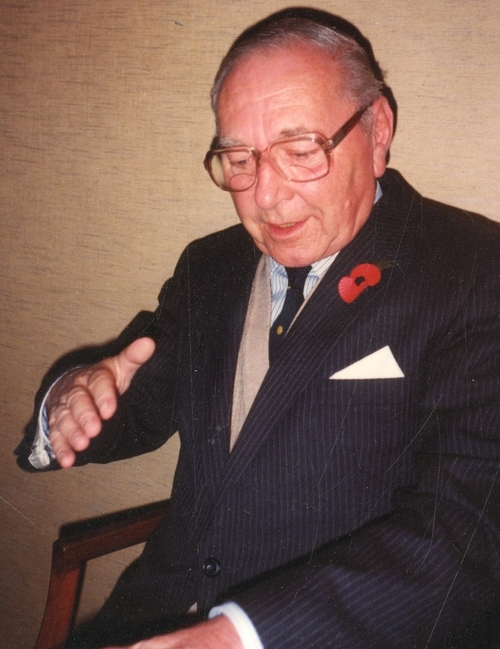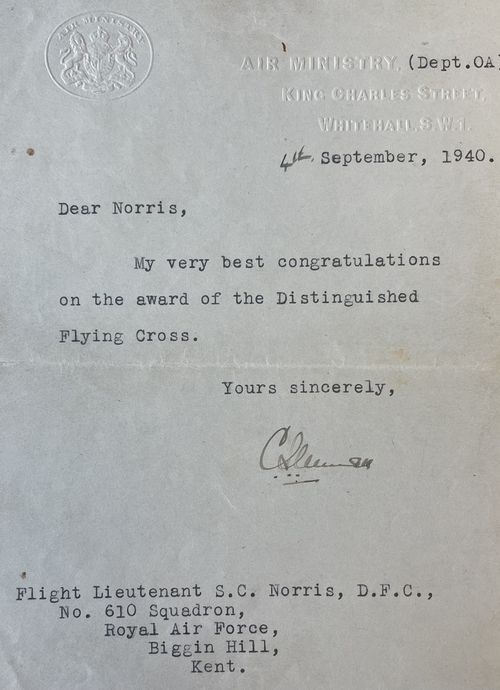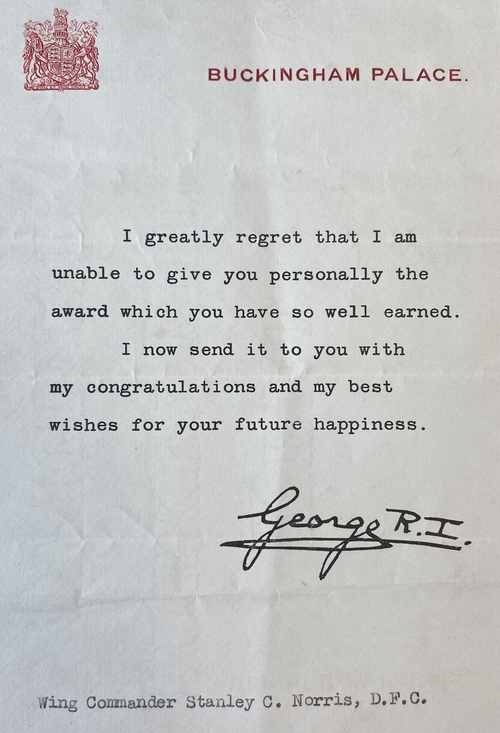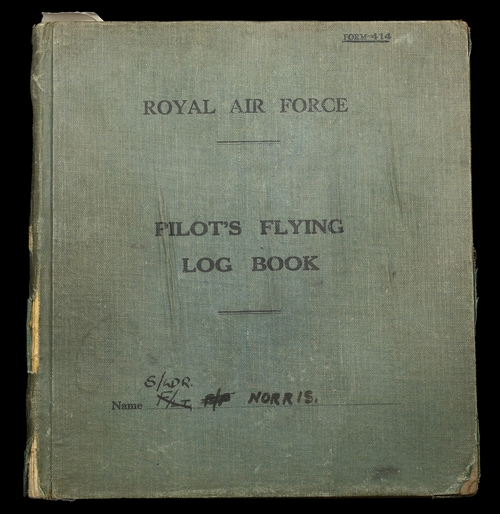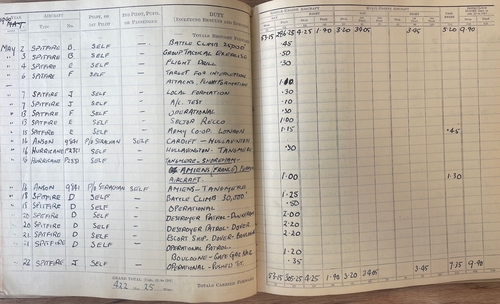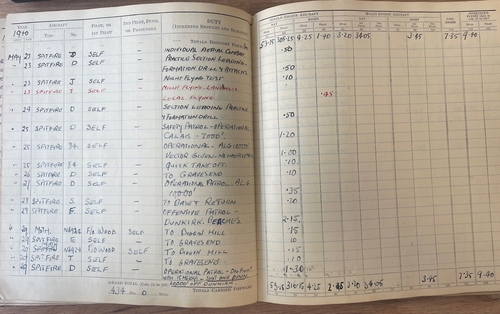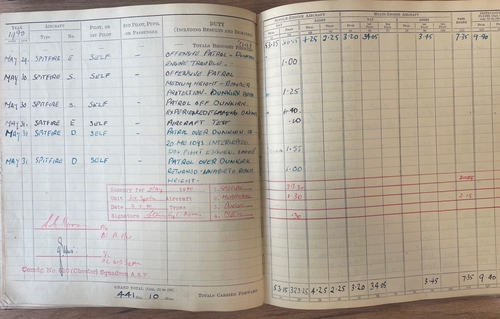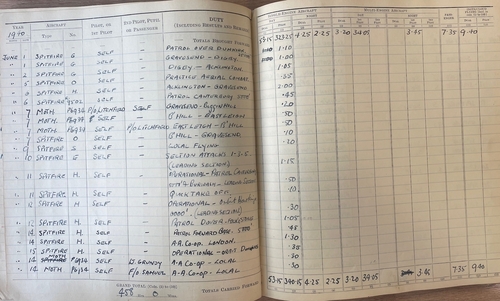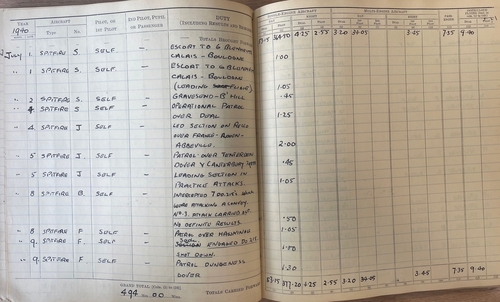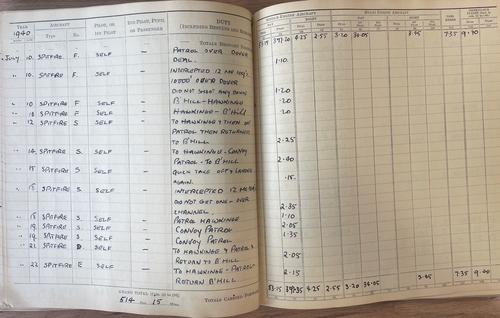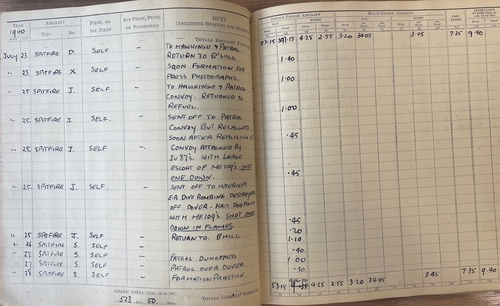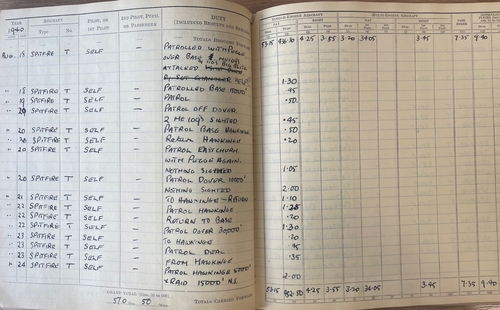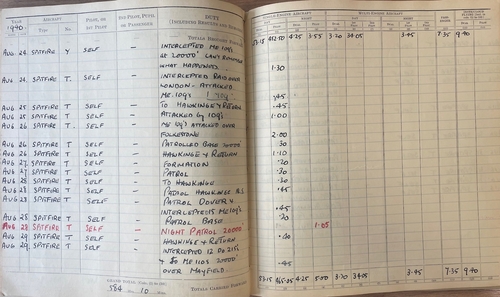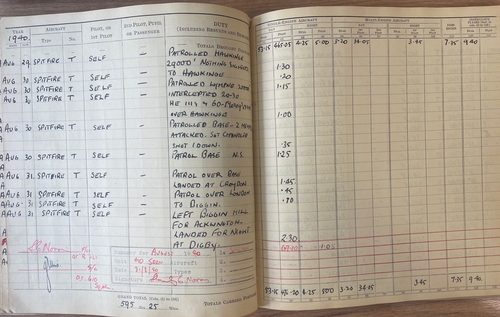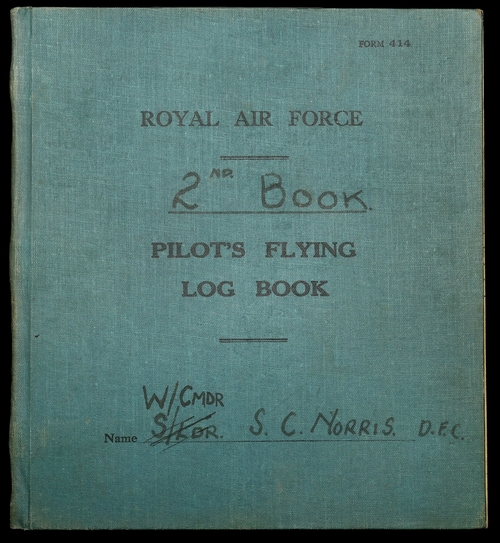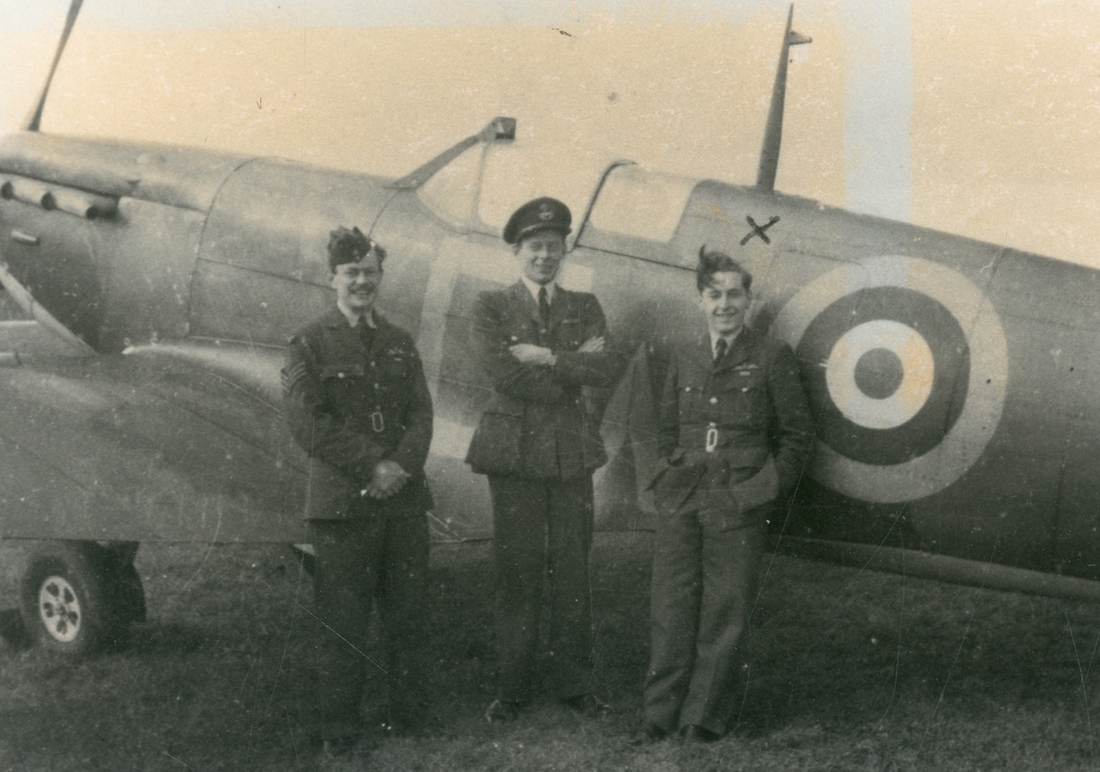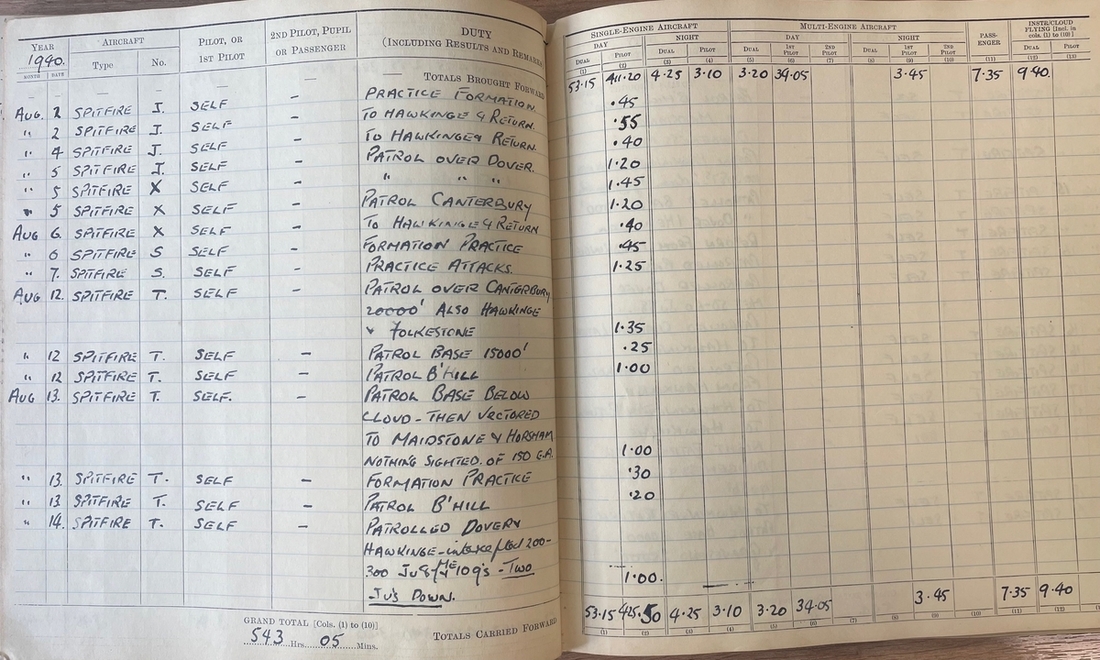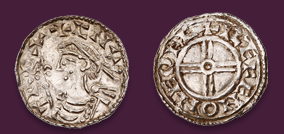Auction: 25002 - Orders, Decorations and Medals
Lot: 193
(x) 'We landed at Biggin Hill at 15.30. As we flew in, No. 610 - or what was left of them - flew out; they seemed in a hell of a hurry, and we were soon to find out why. Within minutes we were to take off on our first mission in what we now all knew as the Battle of Britain. I saw two dispersed aircraft burning from direct hits with incendiary bombs. Bomb craters everywhere…'
Pilot Officer Deacon Elliott of No. 72 Squadron recalls the hasty departure of the battered and depleted 610 Squadron from Biggin Hill on 31 August 1940. No wonder 610 were keen to get airborne; multiple hits on the base on the previous day had caused losses of 39 killed and 26 wounded.
The exceptional Second World War fighter ace's Battle of Britain D.F.C. and Burma operations Bar group of seven awarded to Wing Commander S. C. Norris, Royal Air Force
A pre-war entrant, Norris first went into action in Spitfires of No. 610 (County of Chester) Squadron over Dunkirk, where he downed an Me.109 in a dogfight at the end of May 1940, and he remained likewise employed in the epic struggle that lay ahead, raising his score to ace status in numerous combats over southern England in July and August
As it happened, Norris and his fellow pilots in 610 Squadron were captured on camera during a press call at their advance airfield at Hawkinge, the resultant photographs of the young airmen resting between sorties, and discussing air tactics, providing some of the most iconic images of the Battle
Patently a highly skilled and gallant pilot, Norris rose to the rank of Wing Commander and commanded Hurricane units over Burma on low-level strafing operations in 1944-45, by which time his score stood at 10 confirmed 'kills'
Distinguished Flying Cross, G.VI.R., with Second Award Bar, the reverse of the Cross officially dated '1940' and the Bar '1944'; 1939-45 Star, clasp, Battle of Britain; Air Crew Europe Star; Africa Star, clasp, North Africa 1942-43; Burma Star; Defence and War Medals 1939-45, generally good very fine (7)
Provenance:
Sotheby's, 3 July 1986 (Lot 411), when sold by the recipient.
D.F.C. London Gazette 24 September 1940. The original recommendation for an immediate award - approved by Dowding - states:
'On 24 August 1940, Flight Lieutenant Norris led his flight on an offensive patrol in the vicinity of the Isle of Sheppey, when 20 Ju. 88s were sighted. Flight Lieutenant Norris ordered his flight to attack but whilst carrying out the attack, they were themselves attacked by 20 Me. 109s. Flight Lieutenant Norris had to abandon the attack on the enemy bombers and engage the enemy fighters and destroyed one Me. 109.
This officer has been continuously in action since May 20th and has led his section with great skill and determination. He has destroyed six enemy aircraft and damaged a further two. Owing to his skill and determination as a leader, he has recently been promoted to command a flight.'
The covering remarks of the A.O.C., Air Vice-Marshal Keith Park, state:
'This Flight Lieutenant has destroyed 6 enemy aircraft. He has shown outstanding qualities as a Section and Flight leader. For this, as well as his personal successes, I recommend him for the immediate award of the Distinguished Flying Cross.'
Bar to D.F.C. London Gazette 23 May 1944. The original recommendation states:
'Since being awarded the D.F.C., this officer has taken part in many operational sorties, including low-level attacks on enemy airfields. He has continued to lead his squadron with skill and determination and has destroyed at least a further four enemy aircraft, bringing his total victories to at least 10 enemy aircraft destroyed and others damaged.'
Stanley Charles Norris was born in Tooting, London in 1919 but was raised in Kent where he was educated at Sevenoaks Council School and Tunbridge Wells Technical Institute.
Granted a short service commission in the Royal Air Force in 1937, he gained his 'wings' in June 1938 and was posted to No. 29 Squadron at Debden. Having in the interim then attended an extended navigation course, he joined No. 66 Squadron at Duxford on the outbreak of hostilities but was quickly re-posted to No. 610 Squadron, in October 1939:
'610 (County of Chester) Squadron was part of the Auxiliary Air Force that had been conceived in 1924 as a reserve to help compensate for the enormous postwar decline in R.A.F. numbers. Recruits tended to be drawn from the wealthy young men of the county. The Squadron's motto was CERES RISING IN A WINGED CAR; and in 610's case the car would almost certainly have been a Rolls-Royce … '
So states John Willis's Churchill's Few, in which the story of Flight Sergeant C. S. 'Bam' Bamberger - a fellow 610 pilot - is recounted. Other squadron characters included Flight Sergeant R. F. 'Ronnie' Hamlyn, D.F.M., who became an-ace-in-a-day, and Norris's closest friend, Flying Officer C. O. J. 'Joe' Pegge, D.F.C.
Operating out of Biggin Hill and Hawkinge in the unit's Spitfires, Norris and his fellow pilots first saw action over Dunkirk in May 1940, the former claiming an Me. 109 on the 29th:
'I found myself in a dogfight with 10-15 Me. 109s. One E./A. got on my tail and fired shells from his cannon. I managed to get on his tail and fired three short bursts of about 1-2 seconds each while he was in a climbing turn. E./A. went straight into a spin, with engine going full out … ' (his combat report, refers).
His was one of ten claims made by the squadron over Dunkirk, but they came at a high cost: in just four engagements with the enemy, 610 Squadron lost seven pilots 'missing' or killed in action, and one wounded. Notwithstanding such heavy loss, the squadron now prepared itself for the coming onslaught, carrying out 'practice attacks' and other exercises, in addition to escorting Blenheims on raids to Boulogne and Calais in late June.
The Battle
Of subsequent events, Norris's Flying Log Book and combat reports bear testament to numerous scrambles and patrols, quite a few of them flown out of the Squadron's forward airfield at Hawkinge. Often flying two or three - even four - times a day, Norris had notched up around a hundred sorties by the time of the squadron's withdrawal north at the end of August.
On the very eve of the Battle, on 8 July 1940, Norris and his fellow pilots intercepted seven Do. 215s that were attacking a convoy. Thereafter, contact with the Luftwaffe in one form or another became a regular occurrence, Norris - by way of example - noting dogfights with a dozen or so 109s over Dover and the Channel on the 10th and 18th.
For his own part, having probably destroyed a 109 on the 24th, Norris added two confirmed 'kills' to his score on 25th. The first of them occurred in a mid-afternoon action over a convoy off Folkstone, when he closed a 109 to 50 yards and delivered a devastating 4-second,1500-round burst of fire:
'In a short time white smoke poured from the machine, followed by flames from the rear of the cockpit, or so it seemed. The machine did a steep spiral dive and quickly became enveloped in flames. I saw it hit the sea and the burning petrol spread for some distance.' (ibid)
On his fourth sortie of the day, about 6.40 p.m., Norris singled out to another 109 and delivered a similarly devastating 4-second burst, this time closing the range to just 20 yards:
'I attacked one formation of nine 109s and shot one down who was straggling behind. He appeared to use no evasive action, probably because he was unaware I was on his tail. He went over on his back after I had expended some ammunition, with clouds of black and white smoke pouring out, with every indication of being out of control … ' (ibid)
And he rounded off the month by damaging a Do. 215 in a combat 10 miles south of Dungeness at 1 p.m. on the 29th. Norris pursued the enemy aircraft 'nearly to the French coast' and fired a total of 2,400 rounds at a closing range of 50 yards. But his opponent continued to 'turn from side to side as an evasive action … The rear gunner was still firing and he hit me in the front leading edge, which penetrated my front wheel and punctured the tyre.' (ibid)
Norris, who by now was flying as a Flight Commander, added a brace of Ju. 87s to his score when his flight encountered large enemy formations over Folkestone and Dover on 14 August. He also damaged another in the same encounter:
'I was Red 1, leading 'A' Flight when 610 Squadron were ordered to Manston. On approaching Manston we were vectored to Hawkinge. 'A' Flight patrolled at 15,000 feet above cloud between Dover and Folkestone and at 12.26 sighted a large formation of enemy aircraft approaching Folkstone at the same height as ourselves. I manoeuvred the Flight to attack and noticed there were about 50 or more Ju.87s flying in a large close Vic formation. I attacked the rear Ju. 87 and it went down in smoke and flames, turning over on its back.
As I broke away, I saw the formation start to break up. As we were close to the cloud I found I had broken away into it. On coming out I could not see the rest of my section but saw another formation of Me. 110s and Ju. 87s over Dover at the same height.
I attacked a Ju. 87 on the outside of the formation which went down issuing smoke and burning rapidly. I gave a burst at another at very close range - I only saw him swerve from the formation erratically. I think he was probably damaged.
Red 2 confirmed that the first formation completely broke up after our attack.' (Ibid)
On Sunday, 18 August 1940 - which became known as 'The Hardest Day' - our airfields came under sustained attack from the Luftwaffe. Norris noted in his log book: 'Patrolled over base with Pegge. Me. 109s and 110s attacked. Big Blitz. Help!!' Pegge's Spitfire was hit by enemy fire and sustained further damage on running into a bomb crater on landing.
And in an indication of just how hectic the pace of operations was becoming, Norris's second Log Book entry for 24 August simply states:
'Intercepted 109s at 20,000 feet. Can't remember what happened.'
But a record of events of his third patrol that day survives in the form of yet another combat report. A successful combat as it transpired, his bursts of fire at 100 yards range taking out an Me. 109 off the Isle of Sheppey:
'When first sighted they were on a westerly course but turned north before we reached them. We came up astern to carry out an attack on the enemy bombers, of which there were about 20, when we were attacked by about 20 Me. 109s diving down from above us and in front.
In the ensuing battle, I saw one Me. 109 breaking away and apparently running away. I gave chase and fired a short burst just before we entered a thin layer of cloud. The E./A. was still in front of me when he came out smoking faintly. I gave another two second burst and clouds of black smoke enveloped the aircraft. I overshot him at a height of 1,000 feet. He was diving vertically at this time and could not have had time to pull out … '
And so the scrambles and patrols continued apace for the remainder of the month, Norris and his flight fighting combats with 109s on the 25th and 28th. Then on the 29th, south of Tunbridge Wells, in a combat over Mayfield in Sussex, he claimed what he believed to be a Messerschmitt 'Jaguar' but which was in fact an Me. 110:
'I gave the order to attack. Half-way through we were attacked ourselves by about 50 Me. 110s and Me. Jaguars. I attacked an Me. Jaguar and after two or three bursts his starboard engine began to smoke badly - he went into a very steep spiral to the left and disappeared into the clouds … ' (Ibid)
Finally, on the 30th, Norris and his comrades - flying their third sortie of the day - intercepted 20-30 He. 111s and 60 Me. 109s over Hawkinge. Having then landed to replenish ammunition and fuel, they took off on a fourth sortie, in which Sergeant Chandler claimed a 109. On the last day of August, however, 610's pilots - obvious candidates for battle fatigue - were withdrawn to Acklington in Northumberland. Norris, who was officially credited with six 'kills' at this time, was awarded the D.F.C., although his Flying Log Book appears to list eight 'kills'. It matters not. He had served with distinction and lived to tell the tale.
Tangmere Wing - Malta
Just before Christmas 1940, the Squadron returned to an operational footing when it was ordered south to Westhampnett, where it became part of Douglas Bader's famous Tangmere Wing. And it was to Norris that fell the distinction of leading 610 on its first offensive sweep to France on 10 January 1941.
Moreover, on 3 April 1941 he shared in the destruction of a Ju. 88 in a combat over Beachy Head. He first saw the enemy aircraft flying low over the water at about 100 feet and, assisted by his Blue 2, he delivered three attacks, closing the range to 50 yards and eventually expending all of his ammunition. Smoke was seen pouring from the Ju. 88 as it hit the water:
'A terrific spray shot up and as it subsided the E./A. went up on its nose and sank below the surface … I did not see any survivors.'
Having then been rested as an instructor in No. 55 O.T.U. at Debden, Norris was posted to No. 485 Squadron at Redhill as a Flight Commander in August 1941. Here, he added an Me. 109 to his score on the 29th.
Then in mid-December 1941 he was posted to Malta, where he took command of No. 126 Squadron at Ta Kali. And he was quickly back in action, sharing a probable Ju. 88 on the 19th. But as recounted in his flying log book, events on 9 January 1942 were less happy:
'Convoy patrol. Shot down by Ju. 88.'
The same, it may be said, of events a month later - on 8 February:
'Engine on fire. Crashed.'
Happily, however, Norris was back in form by the 10 March, when, flying his second sortie of the day - during a 'Scramble - Big Blitz' - he shared in a confirmed Ju. 88.
He was next posted in April 1942 to Abadan, Persia, where he held a staff job concerned with building up defences in the oilfields. Then in November 1942, after a short spell as Squadron Leader Flying 243 Wing, he took command of No. 33 Squadron in the Western Desert, in which he flew in support of the 8th Army. He was rested in February 1943 and went to West Africa, but he returned to the Middle East in June.
Burma
Posted to India in August 1943, Norris took command of No. 11 Squadron, which had just been re-equipped with Hurricanes in a fighter-bomber role. The Squadron became operational on the Burma front at the year's end, flying in support of the Imphal operations.
The contribution made by Norris and his fellow airmen cannot be over-estimated, for much of their work was of a low-level nature, strafing enemy columns and airfields. And testimony to that gallant work is to be found in the words of a Japanese officer:
'The Hurricanes flying low over the rubber forest were a serious challenge. Their intrepid pilots continually machine-gunned our roads, shooting up our motor transport and blocking traffic, defects which could not be remedied by orders or scoldings from our Army Headquarters. Until then our mobile corps had been advancing on the paved roads in broad daylight taking no precautions against enemy air raids. While the Hurricanes were flying even single cars moved off the road into the cover of the jungle, and all convoys had to move off the road and get out of sight at the first alarm.'
It was for just such work, and his gallant command of No. 11 Squadron, that Norris was gazetted for a Bar to his D.F.C.
In March 1944, he was promoted to Wing Commander Flying of a Fighter Wing in 221 Group in Burma. Shortly afterwards on the 25th, during a reconnaissance flight over the Lushai and Bishenpur district, he spotted the wreckage of the B-25 Mitchell in which the Chindit leader Orde Wingate died.
Embarked for the U.K. in early 1945, he was serving as C.O. of R.A.F. Aston Down by the end of hostilities. Having then been released from service as a Wing Commander in September 1947, Norris found employment as a King's - and later a Queen's - Messenger, serving as such until 1976. Having sold his Medals & Archive at in July 1986 to the present vendor, the pair struck up a friendship and oft-enjoyed lunches together at Simpsons on the Strand. Various photographs of the gallant Wing Commander were captured of him re-telling tales of various 'kills'. He died in 1991.
Sold with a quantity of original documentation, comprising:
(i)
The recipient's R.A.F. Flying Log Books (2), covering the period December 1937 to August 1946, with good overall commentary, particularly in respect of the Battle of Britain.
(ii)
Congratulatory letter from the Chief of Air Staff on the award of his D.F.C., dated 4 September 1940.
(iii)
Central Chancery letter of notification for a Buckingham Palace investiture on 18 February 1941.
(iv)
Buckingham Palace forwarding letter for the award of the Bar to his D.F.C., in the name of 'Wing Commander Stanley C. Norris, D.F.C.'
(v)
Combat Report, for 24 August 1940, typed format accounting for 1 Me109 downed, previously mounted in frame.
(vi)
A small quantity of wartime newspaper cuttings.
Subject to 5% tax on Hammer Price in addition to 20% VAT on Buyer’s Premium.
Sold for
£70,000
Starting price
£45000

